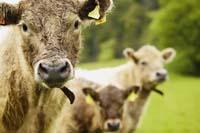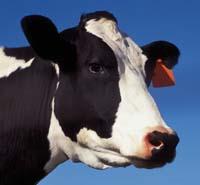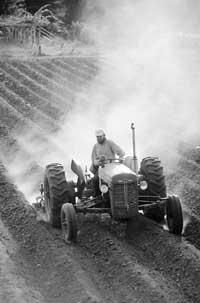The livestock load is not negligible
2010/04/17 Lakar Iraizoz, Oihane - Elhuyar Zientzia

In the last three decades, meat production has tripled throughout the world. In fact, in the world, one thousand seven hundred million animals grow for meat, eggs, milk, etc. And this figure will double by 2050, according to five international scientists.
These researchers have conducted a study on the impact of animal breeding in general. With the results obtained and the conclusions obtained, they write a report: Livestock in a Changing Landscape. In fact, the effects and damages mentioned are not new, but the researchers have estimated these damages.
Among other things, they have explained that a quarter of the earth's surface is occupied by breeding activities of all these animals, such as forage crops for animals. The conversion in farmland has meant the loss of biodiversity and forest cover in many areas. In addition to the occupation of the soil, in the management of these crops a lot of water, fertilizers, pesticides and fuels are used.
In the last three decades, meat production has tripled throughout the world. In fact, in the world, one thousand seven hundred million animals grow for meat, eggs, milk, etc. And this figure will double by 2050, according to five international scientists.

These researchers have conducted a study on the impact of animal breeding in general. With the results obtained and the conclusions obtained, they write a report: Livestock in a Changing Landscape. In fact, the effects and damages mentioned are not new, but the researchers have estimated these damages.
Among other things, they have explained that a quarter of the earth's surface is occupied by breeding activities of all these animals, such as forage crops for animals. The conversion in farmland has meant the loss of biodiversity and forest cover in many areas. In addition to the occupation of the soil, in the management of these crops a lot of water, fertilizers, pesticides and fuels are used.
In humans, the two visible ends
We transform all cows, sheep, chickens, pigs, etc. Raised in food. Because with these meats or other products, the human being, in general, represents a third of the total of proteins that we eat.

But to speak of "general" does not mean that all human beings eat the same amount of meat, of course. There are areas in which meat is overeaten and others in which meat is insufficient and both are harmful to health. Scientists point out the risk of suffering from heart disease and other chronic diseases in case of excessive ingestion of food from animals.
Another problem is the low consumption of animal proteins. Scientists, in particular, have mentioned an investigation with children from Kenya, in which they observed that meat is related to physical growth, cognitive function, and school performance.
This situation can be reversed, the researchers are convinced of this. The report proposes, for example, that authorities offer bonuses to those who carry out sustainable management. It also depends on the individual, according to them, to turn the problems around. When consuming, we can choose cultivated meat from a particular type of ageing, which can help “create a more sustainable and just world”.
Published in Ortzadar

Gai honi buruzko eduki gehiago
Elhuyarrek garatutako teknologia





